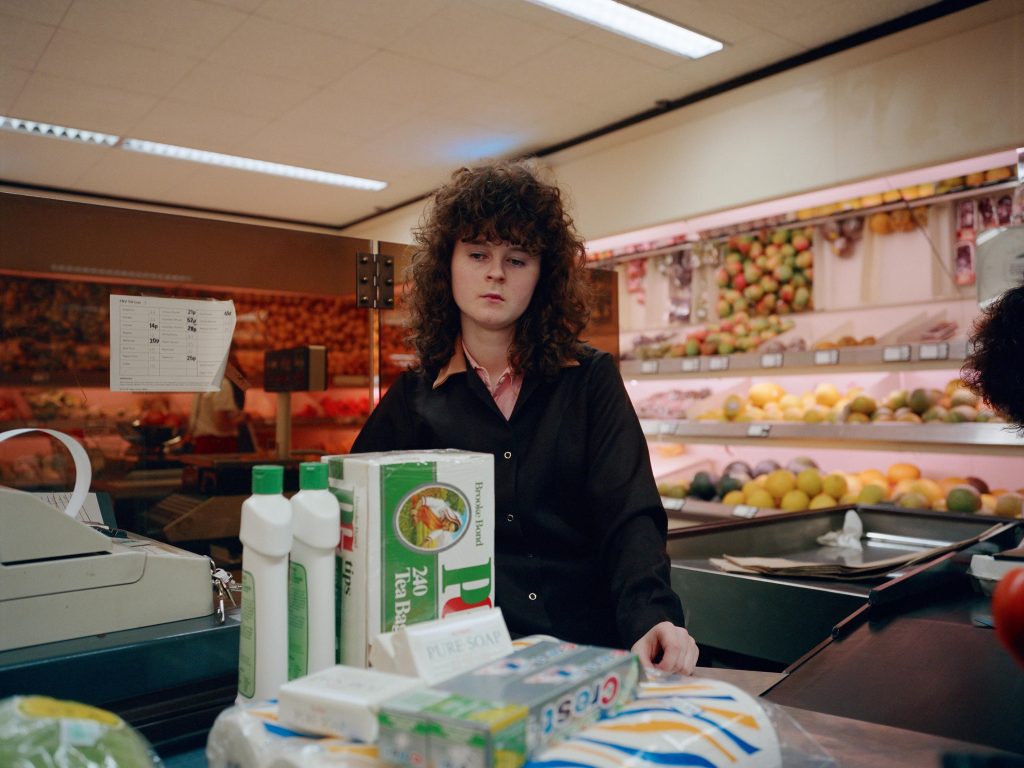di Dario Orlandi
_
“How do you photograph the shadow of history? How do you do that without doing it the really obvious way, not doing a piece of photojournalism?. […] How do you photograph the detritus of that time? The legacy of it?”
Paul Graham
“A camera is a tool for learning how to see without a camera.”
Dorothea Lange
Promoted in 2011 by the Fundación Marcelo Botin of Santander (Spain) and curated by Vicente Todolì, the exhibition Europe: America brought together the two series New Europe (1986-1992) and A shimmer of possibility (2004-2006) that Paul Graham dedicated to Europe in the years immediately preceding the constitution of the EU and to the United States at the dawn of the new millennium, respectively.
The two series, initially conceived as distinct projects and cleverly placed side by side in this interesting re-edition, explore the multitude of small signs that define the two cultures and identify, comparatively, their criticalities, proposing a lateral and radical interpretation of the concept of culture. “What is culture?”, Graham seems to ask through the images of the two works. Is it the iconic and apical moments of collectivity, or, rather, the multitude of fragments that permeate from a deep substratum and reveal it, without any plan, in marginal only apparently insignificant gestures?

The images dedicated to Europe tell the identity, the past and the contradictions of the Old Continent in the process of becoming a confederation of states (the official date of birth of the EU is November 1, 1993), opening up to reflections on the unknown future: the veteran of the Spanish Civil War that examines the uncontrolled urban expansion of the suburbs of Madrid, the star of David scratched on the metal pillar of a Berlin building, the signs of a prêt-à-porter sexuality in the halls of a hard core club in Amsterdam, a decorative capital wrapped in barbed wire in the suburbs of Belfast are some of the signs that the keen eye of the photographer fixes with the methodological rigor of the sociologist and the expressive force of the artist. Only apparently disorganized clues that, read with an attentive eye, reveal the web of ancient critical issues and the contingency of new questions.
The gaze on the United States shifts towards the social, and the economic: figures on the edge of society appear in long sequences (a distinctive feature of Graham’s style) as if to underline the impossibility of a univocal account of the complexity of the individual. The squalor of the desolate suburbs, junk food, the uncertain biographies ritualized in consumer practices, the clichés of the white middle-class, all converge towards the story of a society strongly marked by socio-economic differences, individualism and loneliness.
Graham’s images never indulge in the picturesque, they do not embellish their subjects with formal gimmicks; they fix the moments for what they are, for what they have to say, with lashing shots, often stained by the merciless use of the flash. Photographic art is the art of traces – that’s what the author seams to recall us – and traces, to remain such, must be grasped, not accommodated. His eye therefore broadens to reflect on the photographic medium, on its very unique and irreverent way to be art into things.

Graham’s work – moving along the path traced by the great masters of straight photography and taking it, with clarity and courage, to its extreme consequences – is a masterpiece of analytical depth and language maturity, a perfect synthesis between reading the object and awareness of the expressive tool.
The brilliant and irreverent gaze of the English photographer delivers to the new European and American generations a handbook of images of the themes they will face, outlining – through affinities and differences – the complex dividing line that runs along the two shores of the Western world.

THE BOOK: Europe: America, curated by Iwona Blazwick, Fundación Botin / La Fabrica, 2012.




